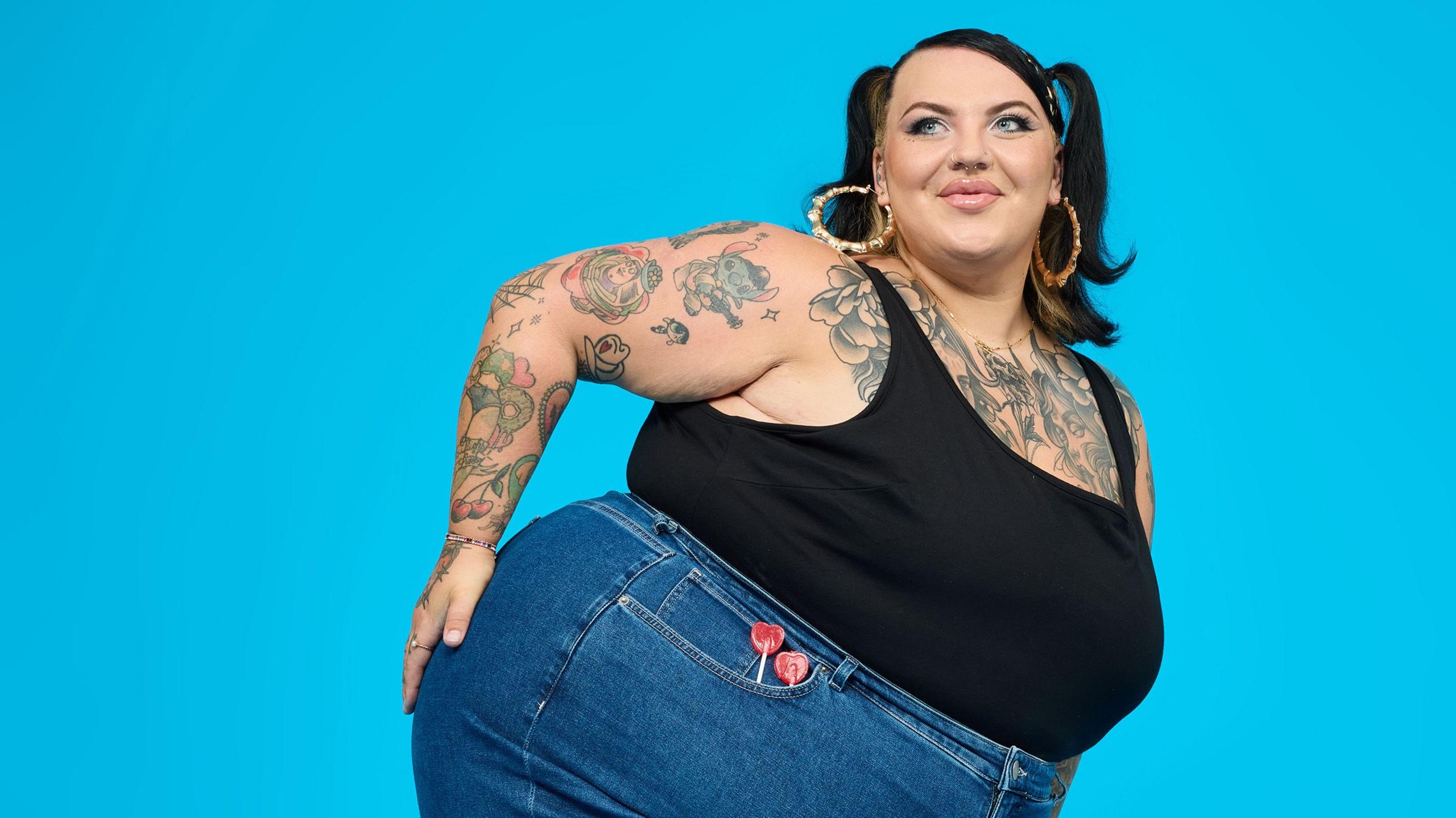Is super skinny back? UK sees rise in complaints over thin models in adverts

- Published
The banning of high street fashion adverts which featured models who looked "unhealthily thin" has led industry experts to warn of a return to the super skinny trend.
The aesthetic characterised by models with hollow faces and protruding bones was seen in the 1990s and early 2000s but in more recent years been pushed aside to allow space for the body positive movement which embraced curves.
However Zara, Next and Marks & Spencer have all had adverts banned in recent months over models who "appeared unhealthily thin". The advertising watchdog has told the BBC it has seen a "definite uptick" in complaints about such ads.
The Advertising Standards Authority (ASA) said in 2025 it had received five or six of these complaints a week but in the two weeks after July's M&S ad ban it had more than 20.
In 2024 it received 61 complaints about models' weight but it only had grounds to investigate eight.
The figures are tiny but it is something the watchdog is keeping a close eye on, along with cracking down on illegal adverts for prescription-only weight loss drugs.
ASA guidelines state that advertisers should ensure that they don't present an unhealthy body image as aspirational.

Charli Howard is a model and body positivity activist
Model and activist Charli Howard wrote a viral open letter after being dropped by her modelling agency for being "too big" despite being a UK size six to eight.
A decade on she says: "I think we're on the cusp of seeing heroin chic return."
The phrase heroin chic was used in the early 1990s, when some models were extremely thin, pale and had dark under eye circles reminiscent of drug use.
Ms Howard says the high street adverts are as worrying as images being shared on social media as "thinspiration".
In June, TikTok blocked search results for "skinnytok" - a hashtag which critics say directs people towards content which "idolises extreme thinness."
"Some women are naturally thin, and that's absolutely fine. But deliberately hiring models who appear unwell is deeply disturbing," she said.
The ASA in all its recent rulings, did not deem any models to be unhealthy. In the case of Next it acknowledged that in other shots of the same model she appeared healthy. Instead it said the pose, styling and camera angles made each of the models in the retailers adverts appear thinner.
M&S said the model's pose was chosen to portray confidence and ease and not to convey slimness. Next said the model, while slim, had a "healthy and toned physique".
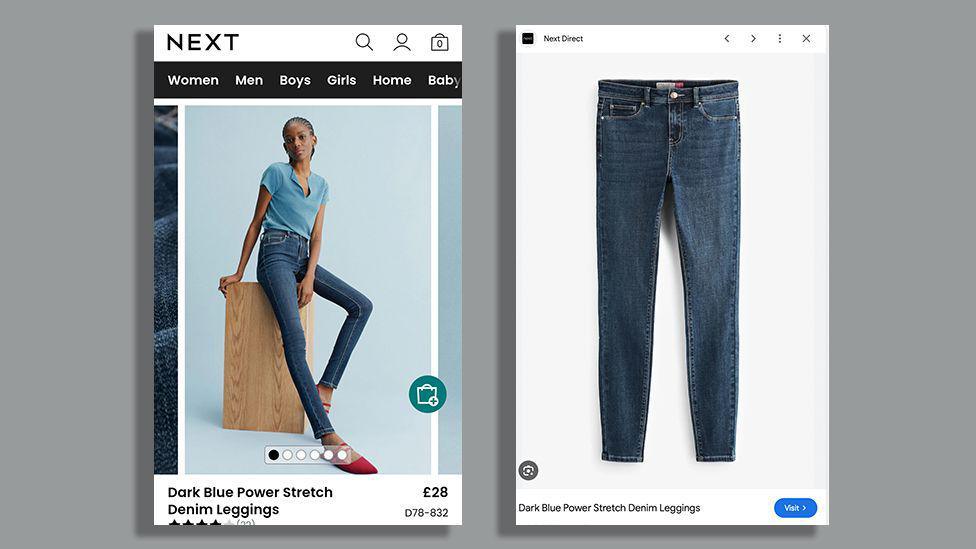
This Next advert was banned for portraying the model as "unhealthily thin"
Zara, which had two adverts banned last week, said that both models had medical certification proving they were in good health.
The ASA said that shadows, poses, and a slick back bun hairstyle had been used to make the models appear thinner.
"Lighting definitely plays a role - it can bring out cheekbones, collarbones, and ribcages," Ms Howard said.
"After the body positivity movement of the 2010s, it was sadly inevitable fashion might swing back... and we know just how harmful it can be," she said.
'Not being thin enough'

For model and yoga teacher Charlotte Holmes, the demand for thinner models is nothing new.
During her 20-year career she noticed "a brief moment of increased inclusivity" but was still turned down for jobs for "not being thin enough."
"The body positivity movement raised awareness, but it didn't fully change the system. Now, it feels like we're back where we started," she says.
The 36-year-old was crowned Miss England in 2012 and came fourth in Britain and Ireland's Next Top Model in 2010.
She believes "ultra-thin" has always remained the "silent standard" for models.
"Terms like 'heroin chic' and trends like 'skinnytok' show how quickly harmful ideals can resurface. It's not progress, it's repetition," she says.
'Many women are naturally very slim'
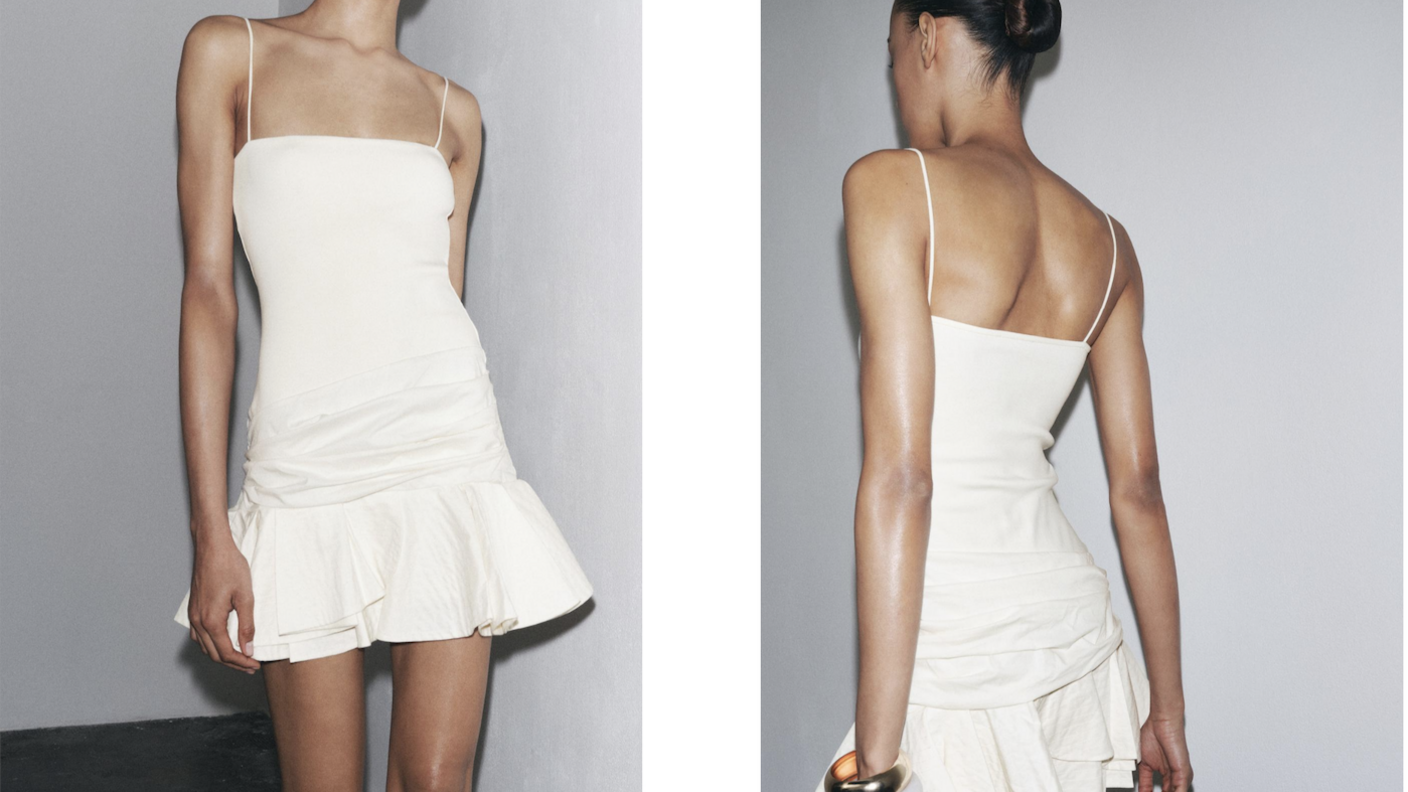
This Zara advert was recently banned by the UK advertising regulator
Fashion journalist and consultant Victoria Moss does not think we are facing "heroin chic" but instead connects the trend to the rise of weight loss injections.
"What's happening at the moment across broader culture is about thinness being held up as a moral health imperative, driven by the fervour over GLP-1 weight loss medication," she says.
Ms Moss acknowledged many celebrities, like Kim Kardashian and Oprah Winfrey, have visibly shrunk before our eyes.
But she still thinks it is unusual to see very slim models in High Street fashion campaigns, saying it is "more a catwalk phenomenon".
"I think in all these cases the models have been very young, it must be incredibly upsetting for them to become the focus of these banned adverts. Many women are naturally very slim and it is wrong to cast aspersions," she says.
'Body diversity is key'
Simone Konu-Rae stylist and senior lecturer in fashion communication at Central Saint Martins, University of the Arts, London says while it is important to "appreciate that the human body comes in a range of shapes and sizes", being thin is not necessarily back in fashion "it simply never went away".
"High Street brands use runway models to elevate their collections," she reckons.
"The High Street is saying 'look, we have the same model as your favourite luxury brand, and our products look just as good at a fraction of the price'," she adds.
Ms Konu-Rae says the problem is not that the models aren't healthy but that this is "not the norm for many people, and trying to achieve this body type can be harmful.
"Showing more body diversity is key to showing people they can be fashionable and stylish without having to change who they are," she says.
'Return of 90's silhouettes'
Personal stylist Keren Beaumont says the comeback of nineties fashion - such as ultra-low rise jeans and strappy slip tops - could be to blame.
"With these re-emerging trends in silhouettes, we see hip bones and chests exposed and in keeping with the original presentations of these silhouettes, these are being shown on very, very thin models," she says.
"My hope is that the recent imagery from Next, M&S and Zara will be a reminder to brands to maintain the diversity we have seen in models in recent years and not to regress back to outdated standards."
Matt Wilson at the ASA says the issue highlighted brands' responsibilities and "the thoughtfulness they need to take".
"Societally we know there's a problem with eating disorders and we must continue to ban adverts that may cause harm."
If you are concerned about the issues raised in this article, help and support is available via the BBC Action Line.
- Published6 August

- Published12 February
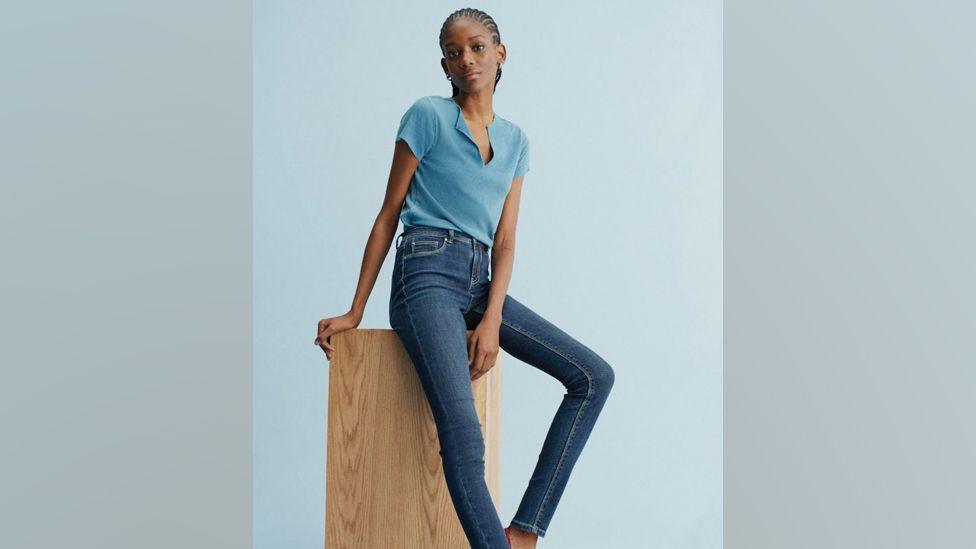
- Published23 July
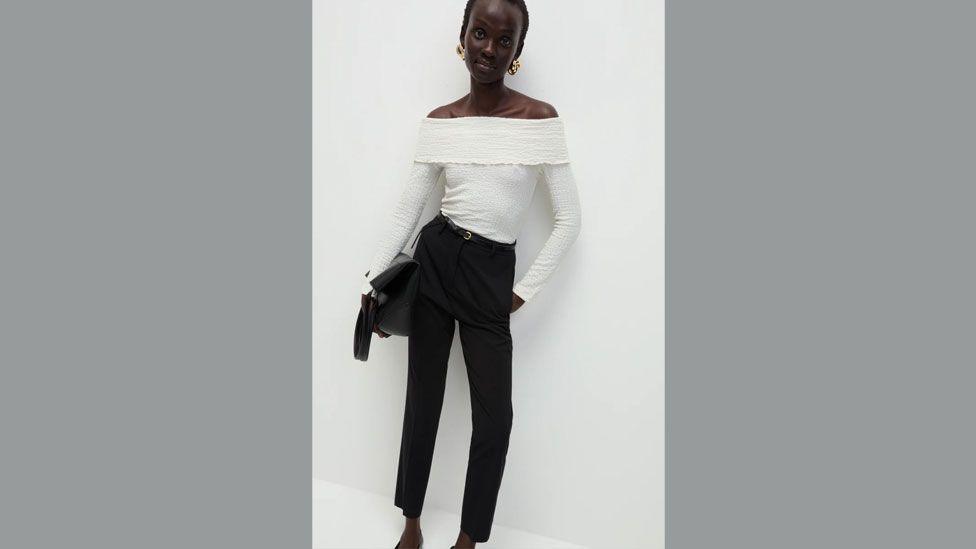
- Published14 March
